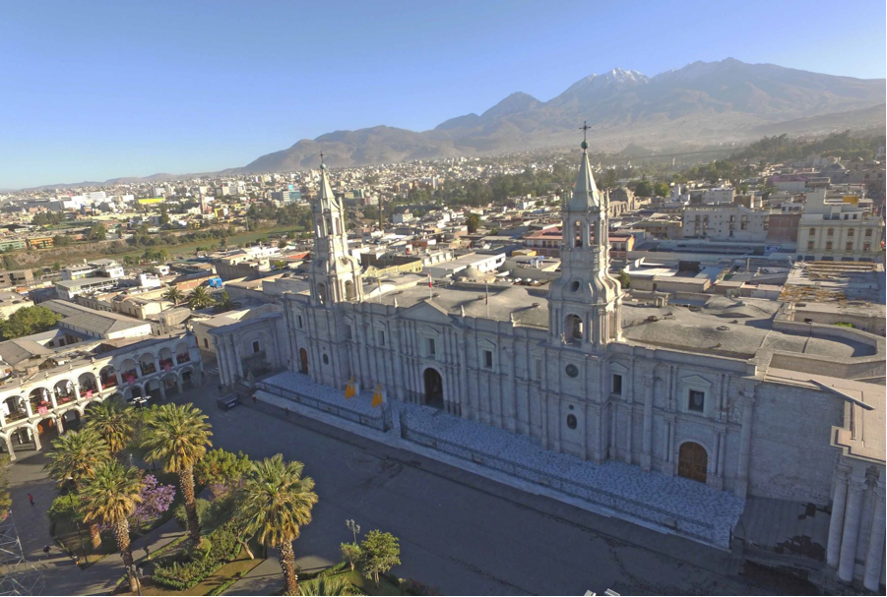
The City of Arequipa has been selected for the Future Tourism Program launched by the Inter-American Development Bank (IDB), which will allow it to boost tourism’s recovery and overcome post-pandemic challenges, Foreign Trade and Tourism Minister Robert Sanchez said last week.
Arequipa’s selection for the aforementioned program is the result of coordinated efforts by the Ministry of Foreign Trade and Tourism (Mincetur), the Regional Government of Arequipa, and the Provincial Municipality of Arequipa.
As a result, the White City —as Arequipa is known— will receive an assessment of their technological readiness and a plan for how to accelerate technology uptake among their tourism companies.
Arequipa is one of the most popular destinations in southern Peru. Its Historic Center offers many accommodation options and is the hub for some of the best and most iconic picanterias (restaurants specializing in spicy dishes).
The Historic Center of Arequipa was declared a Cultural Heritage of Humanity Site by UNESCO in 2000.
This program aims to help Latin America’s tourism industry become more competitive and sustainable by adopting digital and emerging technologies.
It is financed with USD 1.5 million in non-reimbursable resources for technical cooperation from the Spanish General Cooperation Fund at the IDB.
The contest featured stiff competition among 107 destinations in the region. The ten selected for the Future Tourism Program are:
1. Argentina: City of Cordoba
2. Brazil: Fortaleza
3. Chile: Puerto Varas
4. Colombia: Bogota Capital District
5. Ecuador: Galapagos Islands
6. Ecuador: Quito Metropolitan District
7. Guatemala: Antigua Guatemala
8. Mexico: Cancun
9. Peru: City of Arequipa
10. Uruguay: Montevideo
The 10 winning destinations were selected based on the quality and scope of the analysis of current challenges they submitted, the strength of the team assigned to support the technical assistance should the destination be selected, and the list of activities planned in order to apply the results of the technical assistance.
Each destination submitted this information in a letter signed by key public- and private-sector members of its tourism industry.
The technical support will offer a unified methodology and customized roadmaps to speed up the pace of technology adoption among this initial group of Latin American tourism destinations. The resulting pilot model can then be replicated at other destinations in the region.
Prior to the COVID-19 pandemic, tourism in Latin America and the Caribbean was booming and had become a key driver of growth and economic diversification.
The World Travel and Tourism Council estimates that tourism contributed 10% of Latin America’s GDP and 14% of the Caribbean’s GDP in 2019.
However, in 2020, GDP from direct regional tourism fell by 50%, a much sharper drop than in the services or manufacturing sectors, which shrunk by 6% and 7%.